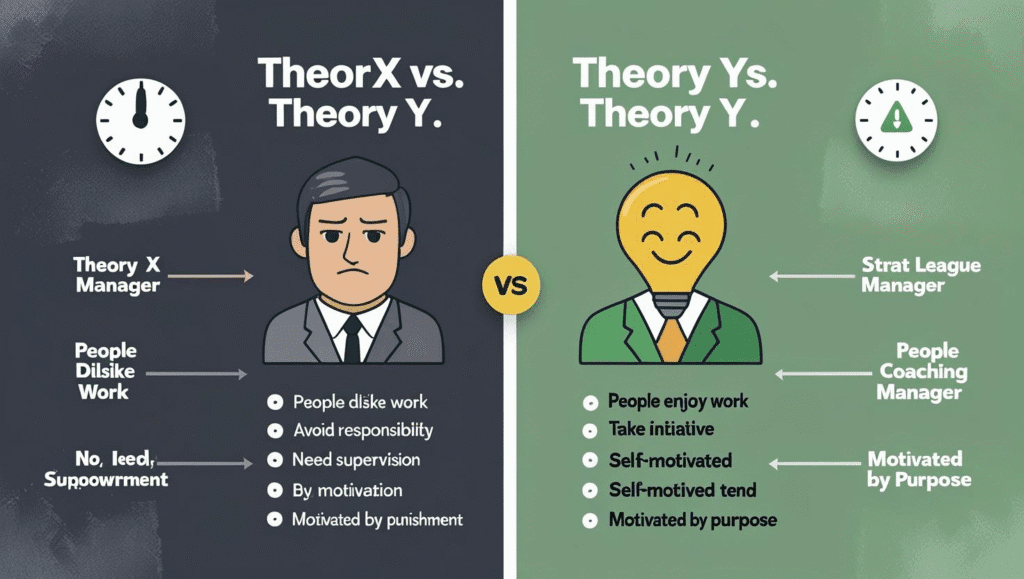The Law of Demand: Unpacking the Core Principle of Economics
Have you ever noticed that when your favorite coffee shop runs a “half-price Frappuccino” special, the line suddenly snakes out the door? Or that when a new smartphone model is released, the older versions get a significant price cut to clear them out? These everyday observations are the real-world expression of one of the most fundamental concepts in economics: the Law of Demand. It’s an intuitive idea that governs our purchasing decisions, shapes business strategies, and forms the bedrock of how markets operate.
Understanding this law, and how to visualize it with a demand curve, is like having a secret decoder ring for the economic world around you. It explains why gas prices fluctuate, why concert tickets for popular artists cost a fortune, and why holiday sales are so effective. This guide will take you on a deep dive, breaking down the theory, showing you how to correctly draw and interpret a demand curve, and exploring the real-world factors that make prices and quantities dance. 📊
Key Takeaways for Your Economic Toolkit
- The Law of Demand states there is an inverse relationship between the price of a good and the quantity consumers are willing to buy, assuming all other factors are constant (ceteris paribus).
- In simple terms: as price goes up ⬆️, quantity demanded goes down ⬇️, and vice-versa.
- A Demand Curve is a graphical representation of this relationship. It always slopes downwards from left to right.
- The vertical (Y) axis of a demand curve always represents Price (P).
- The horizontal (X) axis of a demand curve always represents Quantity Demanded (Q).
- A change in price causes a movement along the curve, while a change in non-price factors causes the entire curve to shift.
What Exactly is the Law of Demand?
The Law of Demand is a cornerstone principle of microeconomics. It formally states:
Ceteris paribus (a Latin phrase meaning “all other things being equal”), as the price of a good or service increases, the quantity demanded by consumers decreases; conversely, as the price of a good or service decreases, the quantity demanded increases.
The “ceteris paribus” part is crucial. It’s the economist’s way of isolating the relationship between price and quantity. To truly test how a price change affects consumer behavior, we have to pretend that nothing else in the world changes—not your income, not the price of other goods, not the latest trends, and not your expectation of a future sale. By holding these other variables constant, we can see the pure effect of price on your willingness and ability to buy something.
Why Does the Law of Demand Make Sense?
This inverse relationship isn’t just an abstract theory; it’s rooted in basic human behavior and two key economic effects:
- The Income Effect: When the price of a good falls, your purchasing power increases. You feel “richer” because your same income can now buy more. For example, if the price of gasoline drops from $4 to $3 per gallon, the money you save can be used to buy more gas or other goods. This boost in purchasing power encourages you to buy more of the cheaper good.
- The Substitution Effect: When the price of a good falls, it becomes relatively cheaper compared to other, similar goods (substitutes). Consumers will naturally substitute the more expensive item for the now-cheaper one. If the price of Coca-Cola drops while Pepsi’s price stays the same, many shoppers will switch to Coke.
Furthermore, this principle is deeply connected to another concept: diminishing marginal utility. This idea suggests that the more you consume of something, the less satisfaction (or utility) you get from each additional unit. Your first slice of pizza on a hungry stomach is amazing; the eighth slice, not so much. Because satisfaction declines, you’re only willing to buy more units if the price is lower. The direct relationship between diminishing marginal utility and the demand curve is what gives the curve its characteristic downward slope.
Visualizing the Law: The Demand Curve
Economists love graphs because they can turn complex relationships into simple, visual stories. The demand curve is the graphical representation of the demand schedule, which is a table showing the quantity demanded at different price points.
Drawing and Labeling a Demand Curve Correctly
A picture is worth a thousand words, especially in economics. Below is a properly labeled demand curve. Let’s break down its components.
A Perfectly Labeled Demand Curve
This graph shows that at a higher price (P1), a lower quantity is demanded (Q1). When the price drops to P2, the quantity demanded increases to Q2. This movement from Point A to Point B is a direct illustration of the Law of Demand.
- The Vertical Axis (Y-Axis): This axis always represents Price (P). Price is the independent variable, the factor that changes and causes a reaction in the consumer.
- The Horizontal Axis (X-Axis): This axis always represents Quantity Demanded (Q). Quantity is the dependent variable; it changes in response to the price.
- The Demand Curve (D): This is the downward-sloping line. It is a collection of points that each represent a specific price-quantity combination. Its downward slope is the visual signature of the Law of Demand.
Movement Along the Curve vs. a Shift of the Curve
This is one of the most common points of confusion for economics students. The difference is simple but profound.
A Movement Along the Demand Curve
A movement occurs when the only thing that changes is the price of the good itself. If Apple decides to cut the price of the iPhone 15 Pro from $999 to $899, this does not change the overall desire for iPhones. It simply means more people are willing and able to buy one at the new, lower price point. On the graph, this is shown as moving from one point to another *along the same curve* (like from Point A to Point B in our example). This is called a “change in quantity demanded.”
A Shift of the Demand Curve
A shift occurs when some other factor—a non-price determinant—changes people’s willingness to buy the product *at any given price*. The entire curve moves either to the right (an increase in demand) or to the left (a decrease in demand). This is called a “change in demand.” For example, if a new study comes out proving that daily coffee consumption extends life, the demand for coffee would increase at all price points. The whole curve would shift to the right.
The Shifters: What Causes the Entire Demand Curve to Move?
These are the “all other things” that we hold constant under the ceteris paribus assumption. When they change, the market changes with them.
1. Income
For most goods (called normal goods), as consumer income rises, the demand for these goods increases (curve shifts right). If you get a raise, you might buy more steak, designer clothes, or take more vacations. Conversely, for inferior goods, as income rises, demand decreases (curve shifts left). Think of instant noodles or generic store brands; people tend to buy less of these as their income allows for better alternatives.
2. Prices of Related Goods
- Substitutes: These are goods used in place of one another. For example, Ford and Chevrolet trucks, or butter and margarine. If the price of a Ford F-150 increases significantly, the demand for a Chevy Silverado will increase (its curve shifts right), as consumers switch to the relatively cheaper option.
- Complements: These are goods that are used together, like smartphones and phone cases, or hot dogs and hot dog buns. If the price of smartphones falls, the demand for them will increase, which in turn will increase the demand for phone cases (its curve shifts right).
3. Tastes and Preferences
This is a catch-all for changes in consumer fads, culture, and advertising. If a popular celebrity is seen wearing a particular brand of sneakers, the demand for that brand will skyrocket (curve shifts right). Similarly, a health craze for oat milk can decrease the demand for traditional dairy milk (curve shifts left).
4. Expectations
Consumer expectations about the future can dramatically impact demand today. If you expect a major sale on laptops next week for Black Friday, you will likely hold off on buying one today, causing the current demand to decrease (curve shifts left). Similarly, if you hear rumors that gas prices are going to spike tomorrow, you’ll probably rush to fill up your tank today, increasing current demand (curve shifts right).
5. Number of Buyers
This one is straightforward. An increase in the number of consumers in a market will increase demand (curve shifts right). This can happen due to population growth, demographic shifts, or a product becoming available in a new region. A decreasing population or a product being pulled from a market will have the opposite effect.
Dig Deeper with These Economic Primers
Mastering these concepts is the first step to thinking like an economist. These highly-regarded books available on Amazon can provide a broader and deeper understanding of the principles that shape our world.

Principles of Economics
Often considered the gold standard for introductory economics, Mankiw’s text breaks down complex topics like demand with clarity and real-world examples.
View on Amazon
Freakonomics
This blockbuster book applies economic thinking to unconventional topics, showing how the principles of demand and incentive shape everyday life in surprising ways.
View on Amazon
Naked Economics
An accessible and entertaining introduction to the core concepts of economics, perfect for anyone who wants to understand the fundamentals without the dense jargon.
View on AmazonAre There Exceptions to the Law of Demand?
While the Law of Demand holds true for the vast majority of goods, economists have identified a few theoretical exceptions:
- Giffen Goods: These are rare, deeply inferior goods that make up a large part of a person’s consumption (e.g., rice or potatoes in a subsistence economy). For these goods, a price increase can, paradoxically, lead to an increase in quantity demanded because the income effect (the price rise makes you so much poorer you can’t afford any other food) outweighs the substitution effect.
- Veblen Goods: These are luxury goods whose demand increases as their price increases, because the high price itself is a signal of high status. Think of exclusive watches, designer handbags, or supercars. For these status symbols, a lower price could actually decrease their desirability and thus their demand.
These exceptions are fascinating but are largely theoretical and rarely observed in practice. For all intents and purposes, the downward-sloping demand curve is a universal feature of market economics.
Frequently Asked Questions (FAQs)
Q1: Why is the demand curve downward sloping?
A: The demand curve slopes downward primarily due to the income effect, the substitution effect, and the law of diminishing marginal utility. As price falls, your purchasing power increases (income effect), the good becomes more attractive than its substitutes (substitution effect), and you are willing to buy more units before your satisfaction from each additional unit drops off (diminishing marginal utility).
Q2: What’s the difference between “demand” and “quantity demanded”?
A: This is a crucial distinction. “Quantity demanded” refers to a specific amount of a good that consumers are willing to buy at a specific price; it’s a single point on the demand curve. “Demand” refers to the entire relationship between price and quantity, represented by the whole curve. So, a price change causes a change in *quantity demanded* (a movement along the curve), while a change in a non-price factor (like income) causes a change in *demand* (a shift of the entire curve).
Q3: Can a demand curve be a straight line?
A: Yes. For simplicity, demand curves are often drawn as straight lines in introductory economics. This is called a linear demand curve. It still represents the inverse relationship between price and quantity and slopes downward. In the real world, demand curves are typically curved (convex to the origin), but a straight line is a perfectly acceptable and useful simplification for understanding the concept.


